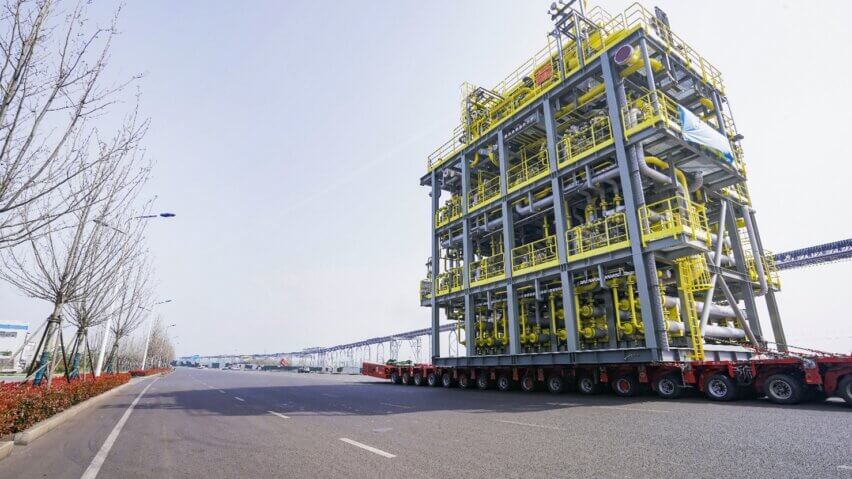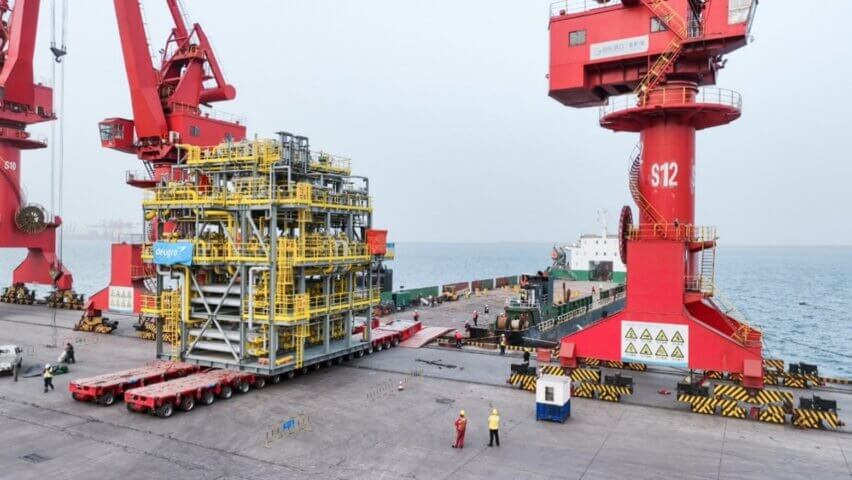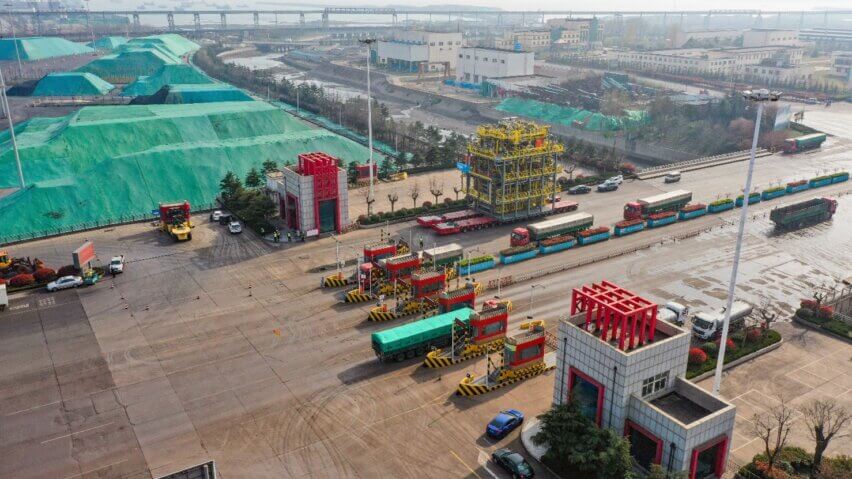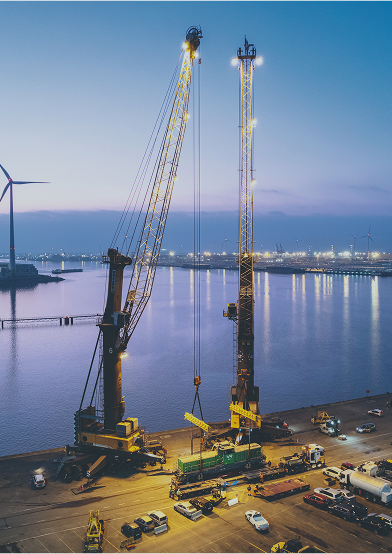deugro Completes Heavy Lift Cargo Movement for Major FPSO Project in China
deugro successfully delivered a 392-metric-ton and 15.8 x 13.2 x 17.2-meter CO2 removal system from Rizhao to the COSCO Shipyard Qidong, China on behalf of its client in the energy industry.
The journey began in Rizhao, China and concluded at the COSCO Shipyard Qidong, spanning a domestic inland road journey of 10 kilometers and a barge journey of two days. After the cargo arrived at the port, the roll-on operation from dockside to barge was completed and the cargo was successfully lashed and secured for its further ocean journey to China.
To overcome the logistical challenges posed by such colossal cargo, deugro employed Self-Propelled Modular Transporters (SPMTs) consisting of 36-axle lines. These cutting-edge transporters ensured the safe and successful pre-carriage of the CO2 removal system, maneuvering through a series of demanding obstacles along the way. These included navigating six turns, lifting traffic lights, and removing gates at the toll station, all of which required precise planning and meticulous execution.
Prior to the operation, the deugro execution team conducted thorough route surveys and comprehensive method statements, leaving no room for uncertainties, with the aim to ensure an around-the-clock approach to safety. To meet the stringent safety requirements, a marine warranty surveyor was present throughout the operation, ensuring compliance and mitigating any risks effectively.
Qu Peng, Head of Area North China, deugro: “Confronting challenging weather head-on, deugro’s execution team navigated dynamic tidal windows at the wharf, requiring precise timing during the cargo roll-on operation. They tracked tidal patterns, optimizing their actions for favourable time slots. Furthermore, adverse windy weather conditions introduced an additional layer of complexity to the operation. To tackle this challenge, deugro’s execution team implemented supplementary safety measures and conducted meticulous checks on every lashing and securing element to fortify the cargo. This demonstrated the team’s resilience and resourcefulness, highlighting deugro’s unwavering commitment to their mission. Additionally, I would like to highlight the special contribution of Gauss Yan who was closely monitoring the whole process of this complex project, further emphasizing deugro’s strong dedication to project success.”







